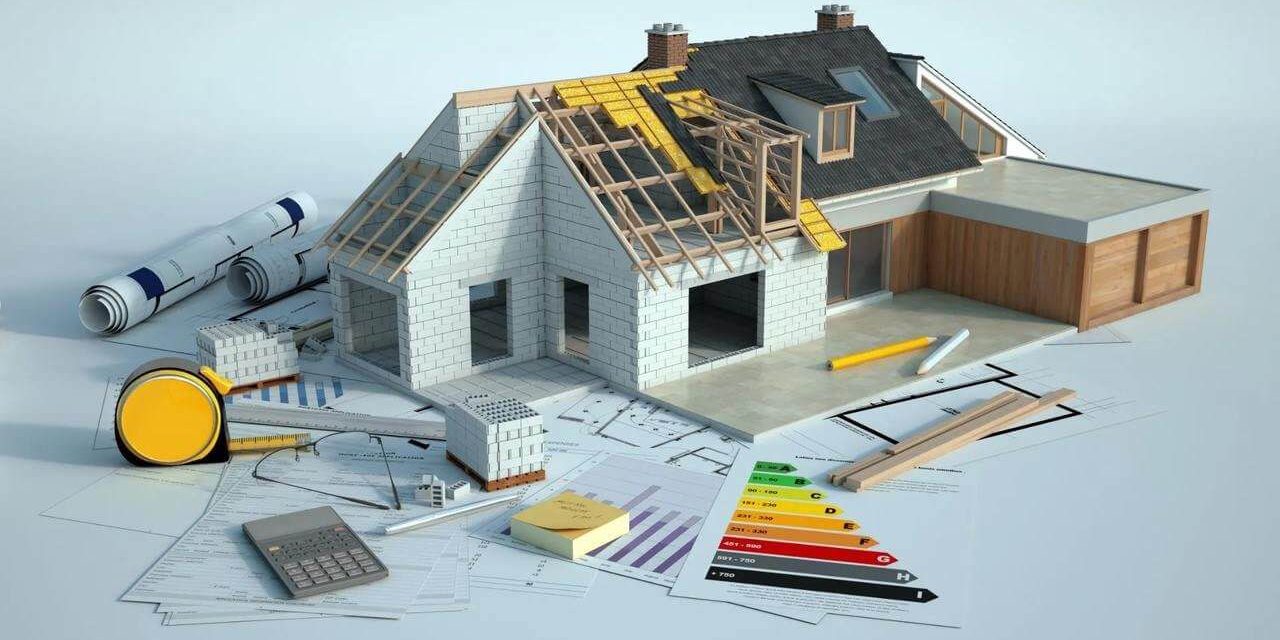Renovating a space can be a truly transformative experience, allowing you to breathe new life into your surroundings. From giving your home a fresh new look to enhancing its functionality, renovation offers a multitude of benefits. In this comprehensive guide, we’ll delve into the art of renovation, exploring what it entails, how it can rejuvenate your space, and essential tips to consider. Whether you’re planning a minor upgrade or a major overhaul, this guide will equip you with the knowledge you need to embark on your renovation journey.
Introduction to Renovation
Renovation, in simple terms, refers to the process of improving or updating a space to enhance its functionality, aesthetics, and overall value. It’s the art of breathing new life into an existing structure, whether it’s a home, office, or any other type of space. Renovations can range from minor changes like repainting walls and replacing fixtures to major transformations that involve restructuring entire layouts. Regardless of the scale, the goal of renovation is to create a space that aligns with your needs, preferences, and lifestyle.
Why Renovation Matters: The Impact of Transformation
Renovation goes beyond the surface level; it has the power to significantly impact your daily life. Imagine walking into a kitchen that’s been revamped with modern appliances, sleek countertops, and a more functional layout. Or stepping into a bathroom that now resembles a spa-like sanctuary. These changes not only improve the visual appeal of a space but also enhance its usability. Renovation can elevate your mood, boost your productivity, and make you fall in love with your space all over again.
Key Factors to Consider Before Renovating
Before embarking on a renovation project, several crucial factors demand your attention. Firstly, define your goals – what do you aim to achieve with this renovation? Set a realistic budget to avoid overspending and assess whether the changes align with the overall aesthetics of your property. Additionally, consider the duration of the renovation and how it might impact your daily routine.
Types of Renovation Projects: From Small Upgrades to Full Overhauls
Renovation projects come in various shapes and sizes. Small upgrades might involve changing cabinet hardware or updating light fixtures, while larger projects could encompass knocking down walls to create an open-concept layout. Whether it’s a simple refresh or a complete transformation, each type of renovation has its unique benefits and challenges.
Types of Renovation
Residential Renovation
Residential renovation encompasses projects done within homes, apartments, and condominiums. It can range from remodeling kitchens and bathrooms to revamping entire living spaces.
Commercial Renovation
Commercial renovation focuses on rejuvenating spaces used for business purposes. It could involve redesigning retail stores, office spaces, or restaurants to create a more appealing and efficient environment.
Functional vs. Aesthetic Renovation
Functional renovations prioritize improving a space’s utility. Aesthetic renovations, on the other hand, concentrate on enhancing visual appeal. The best projects achieve a balance between both.
The Renovation Process Unveiled
The renovation process typically follows a series of well-defined steps. It begins with planning and design, where you conceptualize the changes you want to make. Then comes the demolition phase, where existing structures are removed. Next is the construction phase, where new elements are added. Finally, the finishing touches are applied, bringing the design to life. Effective communication with contractors and a clear timeline are essential for a successful refurbishment journey.
Finding Inspiration: Exploring Design Trends
Inspiration is the driving force behind any refurbishment project. Magazines, websites, and social media platforms are treasure troves of design ideas. Whether you’re drawn to minimalist aesthetics, rustic charm, or contemporary elegance, exploring design trends will help you refine your vision and make informed decisions.
Creating a Realistic Renovation Budget
Budgeting is a critical aspect of renovation. It’s essential to determine how much you’re willing to invest in the project. Research costs associated with materials, labor, and any unexpected expenses. Having a buffer for contingencies ensures that you’re financially prepared for unforeseen challenges.
Hiring Professionals vs. DIY: Making the Right Choice
Deciding between hiring professionals and embarking on a do-it-yourself (DIY) journey depends on your skill level, the complexity of the project, and your availability. While DIY can be fulfilling, some tasks are best left to professionals to ensure safety and quality. Assess the scope of work and make an informed choice.
Navigating Permits and Regulations
Certain renovation projects require permits from local authorities. These permits ensure that the changes adhere to safety and zoning regulations. Research the necessary permits for your project and factor in the time and cost associated with obtaining them.
Renovation Challenges: How to Overcome Common Hurdles
Renovation is not without its challenges. Unforeseen structural issues, delays in material delivery, and communication gaps can arise. Flexibility and patience are key attributes to navigate these hurdles successfully. Having a contingency plan in place can help mitigate the impact of unexpected challenges.
Renovating for Resale: Boosting Property Value
If you’re renovating with the intention of selling your property, strategic choices can significantly impact its resale value. Focus on improvements that have broad appeal, such as kitchen and bathroom upgrades. Neutral color palettes and timeless designs often resonate with potential buyers.
Renovation Safety: Protecting Yourself and Your Space
Safety should be a top priority during renovation. If you’re tackling a DIY project, educate yourself about proper tool usage and safety protocols. For larger projects involving contractors, ensure they follow safety guidelines and have insurance coverage.
Sustainable Renovation Practices for a Greener Future
Incorporating sustainable practices into your renovation not only benefits the environment but also reduces long-term costs. Opt for energy-efficient appliances, materials with low environmental impact, and designs that maximize natural light and ventilation.
Renovation Mistakes to Avoid: Lessons from Experts
Learning from others’ mistakes can save you time, money, and frustration. Some common renovation pitfalls include underestimating the budget, not adequately vetting contractors, and failing to plan for contingencies. Take heed of these lessons to ensure a smoother renovation journey.
Incorporating Technology in Your Renovation Project
Technology can elevate your refurbishment experience. From virtual reality tools that allow you to visualize changes before they’re implemented to smart home systems that enhance convenience, integrating technology can modernize your space.
The Power of Paint: Transforming with Color
Paint is a powerful tool in renovation. It’s cost-effective and can completely transform a space’s ambiance. Whether you’re going for a cozy atmosphere with warm tones or a vibrant and energetic feel with bold colors, paint has the ability to set the mood.
Kitchen Revamp: From Outdated to Outstanding
The kitchen is often considered the heart of the home, and renovating it can significantly impact your daily routine. Upgrading appliances, reimagining storage solutions, and optimizing the layout can turn an outdated kitchen into a functional and stylish space.
Bathroom Makeovers: Creating Serene Retreats
Bathrooms are no longer just utilitarian spaces – they’ve become havens of relaxation. Incorporate luxurious elements like rain showers, elegant fixtures, and soothing color schemes to create a spa-like atmosphere in your bathroom.
Flooring Trends for a Stylish Foundation
Flooring choices can define the aesthetic of a space. From hardwood floors that exude timeless elegance to eco-friendly options like bamboo and cork, the right flooring can tie your entire renovation together.
Lighting Matters: Illuminating Your Renovated Space
Lighting plays a crucial role in showcasing your renovated space. Consider a combination of ambient, task, and accent lighting to create a well-balanced and inviting atmosphere. Pendant lights, chandeliers, and recessed lighting are popular choices.
Storage Solutions for a Clutter-Free Home
Effective storage solutions are essential for maintaining a clutter-free and organized home. Incorporate built-in shelves, hidden compartments, and multipurpose furniture to maximize space utilization.
Furniture and Décor: Complementing Your Renovated Space
Choosing furniture and décor that complement your renovated space’s design is crucial. Whether your style is classic, modern, or eclectic, opt for pieces that harmonize with the overall aesthetic and enhance the functionality of the room.
Outdoor Oasis: Extending Your Renovation to the Outdoors
Renovation doesn’t have to be confined to indoor spaces. Transform your outdoor area into an inviting oasis by adding seating, landscaping, and lighting. An outdoor space can become an extension of your home for relaxation and entertainment.
Maintaining Your Renovated Space: Tips for Longevity
After the excitement of the refurbishment, it’s important to focus on maintenance. Regular cleaning, minor repairs, and addressing issues promptly can prolong the lifespan of your renovated space.
FAQs
Can I renovate my space on a tight budget?
Absolutely! Renovations can be tailored to various budgets. Prioritize essential changes, explore cost-effective materials, and consider DIY options to make the most of your budget.
How long does a typical renovation project take?
The duration of a renovation project varies based on its complexity. Small projects can be completed in a few weeks, while larger renovations might take several months. A clear timeline from your contractor can provide a more accurate estimate.
Do I need to hire an architect for my renovation?
Not all renovation projects require an architect. Simple cosmetic changes might not necessitate architectural input. However, for structural changes or major overhauls, hiring an architect can ensure that the design is both functional and aesthetically pleasing.
What should I prioritize: aesthetics or functionality?
Ideally, a balance between aesthetics and functionality is key. While a visually appealing space is important, it should also serve your practical needs. Consult with a designer to strike the right balance for your renovation project.
Are there any eco-friendly renovation options?
Yes, many eco-friendly options are available for renovations. From using sustainable materials to incorporating energy-efficient systems, these choices not only benefit the environment but also contribute to long-term cost savings.
How can I ensure that my renovation aligns with my personal style?
Gathering inspiration from various sources – magazines, websites, and social media – can help you define your personal style. Working closely with a designer or architect can also ensure that your vision is brought to life.
Conclusion: Embrace the Journey of Transformation
Embarking on a renovation journey is an exciting endeavor that holds the promise of a transformed space. From envisioning the changes to witnessing them come to life, refurbishment is a testament to the power of creativity and innovation. Whether you’re revitalizing your home or revamping a commercial space, the journey of transformation is an opportunity to create an environment that resonates with your aspirations and enhances your quality of life.






